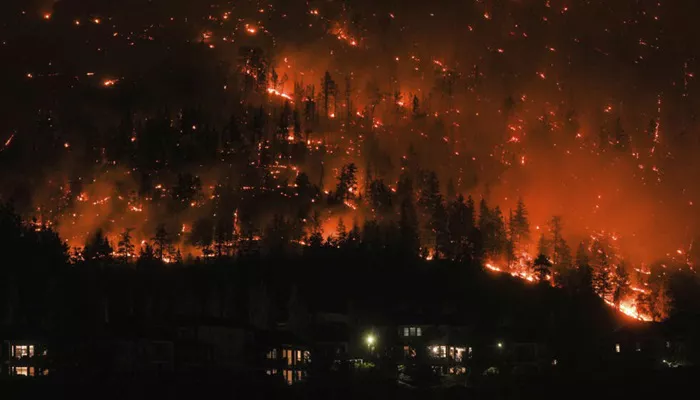On the same day, the New York State Department of Environmental Conservation issued air quality warnings to multiple counties, including sections of New York City. The public was advised to reduce strenuous outdoor activities to minimize health risks. Sensitive groups, such as children and those with respiratory diseases, were specifically reminded to take enhanced protective measures.
On Wednesday, the New Jersey Department of Environmental Protection issued an “orange code” air quality alert in several areas within the state. This indicates that pollutant concentrations may pose a health threat to children, the elderly, and individuals with heart and lung diseases.
Smoke Spreads Across the US
The dense smoke has also spread to the central and western regions of the United States. In many places, like Wisconsin and northern Iowa, the air quality was rated as “red,” signifying that the area has “unhealthy” air conditions.
Origins of the Crisis
This cross – border ecological crisis is rooted in the unusually active wildfire season in Canada. As reported by Reuters, since May, dozens of wildfires have broken out across the country. Data from the Canadian Interdepartmental Forest Fire Service Center shows that as of March 3rd, there were over 212 active fire sites nationwide, with approximately half of them out of control.
The majority of the fires are concentrated in the central – western provinces of Manitoba, Saskatchewan, and Alberta. The provincial governors of Manitoba and Saskatchewan declared a 30 – day state of emergency across their provinces last week. Currently, more than 25,000 people have been forced to evacuate from these two provinces.
Complicating Factors and Forecasts
Adding to the situation, a Saharan dust plume crossing the Atlantic Ocean is expected to reach the southeastern state of Florida on the evening of the 4th. It will spread along the southeastern coast over the weekend. The meteorological forecast center predicts that the smoke in the northeastern region will start to ease from the 5th. However, the Canadian and Great Lakes regions will still remain shrouded in thick smoke.
International Reach of the Wildfire Smoke
The scale of this wildfire is enormous, with the smoke even drifting across the Atlantic Ocean and reaching Europe. The National Oceanic and Atmospheric Administration (NOAA) of the United States stated that the smoke over Western Europe is expected to continue moving eastward. Although the smoke has caused hazy skies, it is not anticipated to impact ground – level air quality. Nevertheless, the Copernicus Institute in Europe believes that the fact that the smoke has risen to a significant height and traveled such a long distance indicates the extreme scale and intensity of the fires.
Recurring Wildfire Problem in Canada
The wildfire season in Canada typically runs from May to September. In the past two years, Canada has been severely affected during this period. In 2023, wildfires in provinces like Alberta persisted for nearly four months. During this time, most of North America was enveloped in dangerous smoke, and there was a notable increase in the number of people seeking medical treatment for asthma. Current signs suggest that the 2025 wildfire season may remain highly active.
Related topics:
- CBOT wheat down 4.20% on bearish acreage data from Statistics Canada
- 50%! Us Steel and Aluminum Tariffs Double, Triggering Chain Reactions. Australian Pm Bluntly Says “Us Economy Is Self-Harming”
- The Oecd Has Significantly Lowered Its Growth Forecast for the United States. Trump’s Tariff Policies Have Dampened the Global Economic Outlook.

